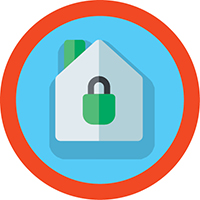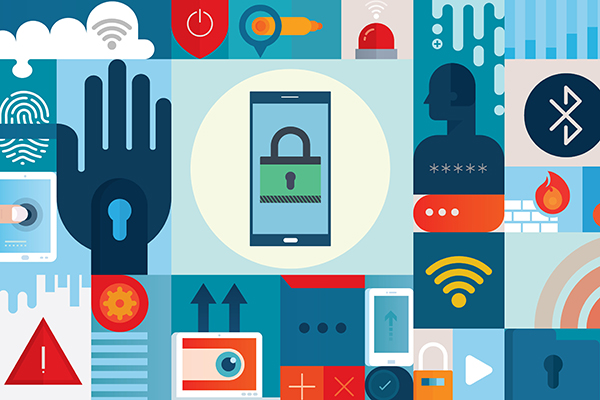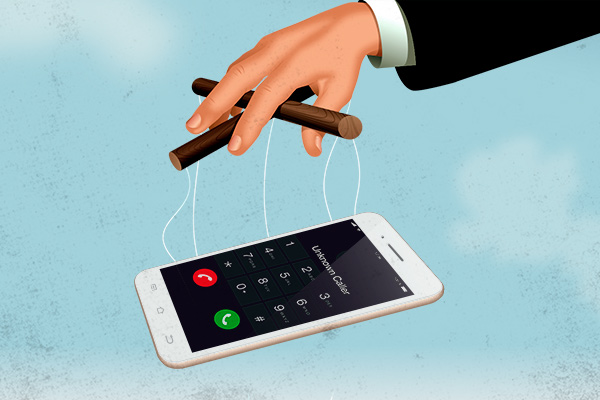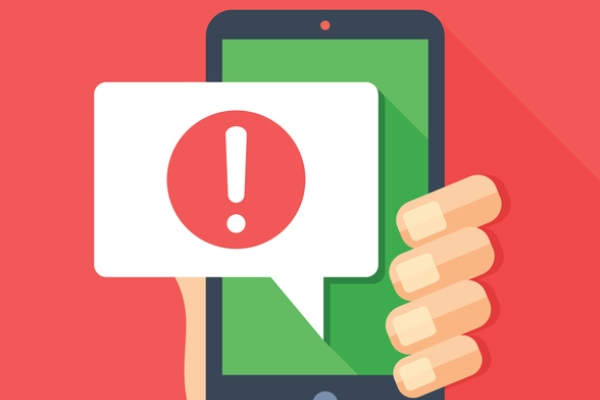While the internet offers goodies galore for kids—educational tools, fun games, connections with faraway relatives—it can also pose risks. If your child is surfing the web, it’s a good idea to be paddling right alongside them—or at least observing carefully.
One way to help protect your kids is to talk to them about online behavior, safety and security, advises the Federal Trade Commission (FTC). Begin the conversation as soon as your child is using a computer or mobile device, circle back often and always be honest and patient.
Then keep an eye out. Here are some of the risks to watch for—and how to help keep your kids safe from them.
Online Scams
 What they are: Scams targeting kids could include a “talent search” for models (that later ask for money) or “scholarships” claiming to recognize achievements (but require significant upfront fees), says Paige L. Schaffer, CEO, Global Identity and Cyber Protection Services for Generali Global Assistance. The latest scams capitalize on the popularity of online games by claiming to help kids achieve success in exchange for their usernames and passwords—and even their parents’ credit card information.
What they are: Scams targeting kids could include a “talent search” for models (that later ask for money) or “scholarships” claiming to recognize achievements (but require significant upfront fees), says Paige L. Schaffer, CEO, Global Identity and Cyber Protection Services for Generali Global Assistance. The latest scams capitalize on the popularity of online games by claiming to help kids achieve success in exchange for their usernames and passwords—and even their parents’ credit card information.
How to help avoid them: Set clear boundaries on who kids interact with, suggests Schaffer; counsel them to ignore anyone who’s not a real-life acquaintance. Make sure kids know never to give out personal information like passwords, phone numbers and home addresses.
Malware
 What it is: Hackers see children as the perfect gateway into home devices, says Schaffer—potentially the same devices that parents are using for sensitive tasks like online banking. Be aware that malware may be present on kid-friendly apps, websites and games. Once malware is accidentally installed on a computer or device, victims can be vulnerable to things like viruses and spyware.
What it is: Hackers see children as the perfect gateway into home devices, says Schaffer—potentially the same devices that parents are using for sensitive tasks like online banking. Be aware that malware may be present on kid-friendly apps, websites and games. Once malware is accidentally installed on a computer or device, victims can be vulnerable to things like viruses and spyware.
How to help prevent problems:
- Make sure to keep your anti-malware/anti-virus software up to date.
- Emphasize to your kids that they should never purchase something online without checking with you, and discourage them from clicking on suspect links.
- Consider using a “white-listing” tool to help prevent your children from accidentally navigating to websites that have been reported as unsafe.
- Use commands in the “settings” tab of your device to help prevent the downloading of apps and in-app purchases.
ID Theft
 What it is: More than one million children were victims of identity theft in 2017, with the majority of them under eight years old, according to a recent study. Identity thieves can use a child’s Social Security number to apply for government benefits, open bank and credit card accounts, apply for a loan or utility service or rent a place to live, says Schaffer.
What it is: More than one million children were victims of identity theft in 2017, with the majority of them under eight years old, according to a recent study. Identity thieves can use a child’s Social Security number to apply for government benefits, open bank and credit card accounts, apply for a loan or utility service or rent a place to live, says Schaffer.
How to help prevent it:
- Educate your child about the importance of keeping personal information—including last names, addresses and phone numbers—private when using social networking sites.
- When filling out forms that require your child’s Social Security number, ask if it’s absolutely necessary or if there might be an alternative.
- You can freeze your child’s credit, which restricts access to their credit profile so identity thieves cannot open accounts in their name.
- Start pulling your child’s credit reports at age 16 to ensure there’s no unusual activity.
Smart Toys
 Why they can be a problem: Internet-connected smart toys are inherently vulnerable, warns Schaffer; hackers can use cameras and microphones to see who’s home or steal visible personal information. If the toys are connected to a home network, that could be at risk as well.
Why they can be a problem: Internet-connected smart toys are inherently vulnerable, warns Schaffer; hackers can use cameras and microphones to see who’s home or steal visible personal information. If the toys are connected to a home network, that could be at risk as well.
How to help avoid problems: Shut off microphones and cameras in these toys, especially when not in use. “Toy companies generally aren’t well-versed in data security,” says Schaffer, “and it’s taking them some time to catch up.” A general rule of thumb, she says, is to avoid buying smart toys as soon as they hit the shelf; wait to see if any concerns or security flaws surface from other users.
Cyberbullying
 What it is: A recent survey found that 59 percent of U.S. teens have personally experienced at least some form of online harassment, perhaps because kids seem to feel less empathy for their peers behind a screen.
What it is: A recent survey found that 59 percent of U.S. teens have personally experienced at least some form of online harassment, perhaps because kids seem to feel less empathy for their peers behind a screen.
How to help prevent it: Consider limiting screen time: The same study found that children who are online “constantly” are more prone to cyberbullying than those whose screen time is moderated. Also, monitor your kids’ social feeds for any mean-spirited comments, advises the FTC, and remind them that they can always come to you if they’re being bullied.
Inappropriate Content
 What it is: Your children may search for adult or violent content, or they may stumble upon it accidentally. Even if a site attempts to age-verify, curious kids may find a way in, according to the FTC.
What it is: Your children may search for adult or violent content, or they may stumble upon it accidentally. Even if a site attempts to age-verify, curious kids may find a way in, according to the FTC.
How to help kids avoid it: Invest in parental-control software to block websites you don’t want kids to visit, or use a browser that automatically blocks websites unsuitable for kids, suggests the FTC. Also, place your computer in a room the whole family uses regularly and monitor your kids’ recent search histories so you know what sites they’re visiting.
Fake “Friends”
 What the problem is: Adults who want to exploit children may use social networking sites to locate and befriend potential victims, according to the Federal Bureau of Investigation (FBI). They may pretend to be young, offer gifts and try to meet.
What the problem is: Adults who want to exploit children may use social networking sites to locate and befriend potential victims, according to the Federal Bureau of Investigation (FBI). They may pretend to be young, offer gifts and try to meet.
How to help avoid the problem: Use a website’s privacy settings to control access to your kid’s profile page, advises the FBI. Encourage them to interact online only with people they know, such as friends and relatives. Explain why it’s important not to disclose personal information online. Make it a rule that your kids can never give out personal information or meet anyone in person without your prior knowledge and consent.
Don’t play games with your—or your family’s—personal information. Identity theft protection through the GEICO Insurance Agency can help you (and up to six children or dependents) restore your identity in case of a breach. Get a quote now!
Read more: How To Help Protect Your Smartphone From Hackers
By Maridel Reyes










mitchell stachowicz says,
this is exactly what we did with our kidsfow to driwe safely before they sit behind the steering wheels